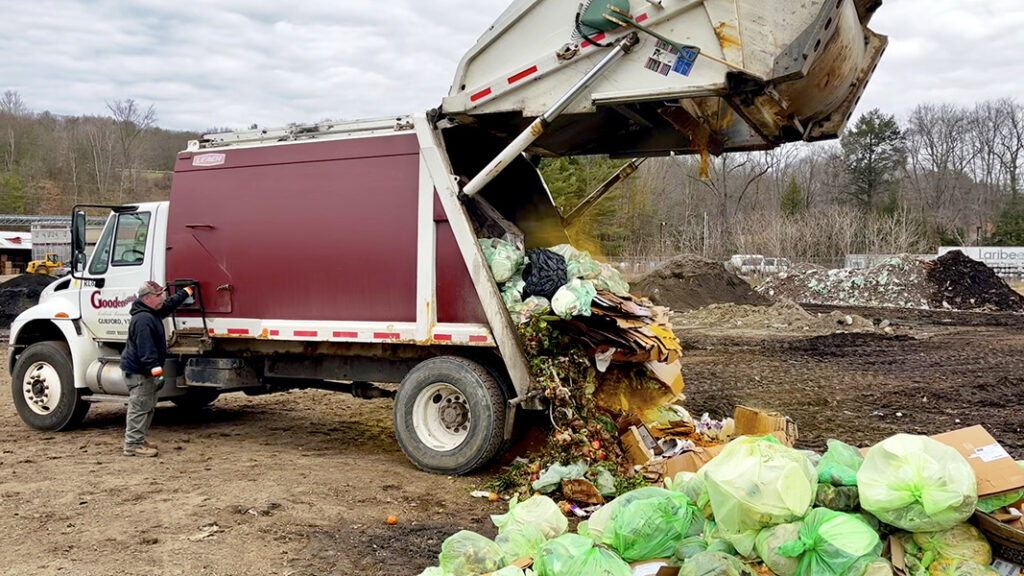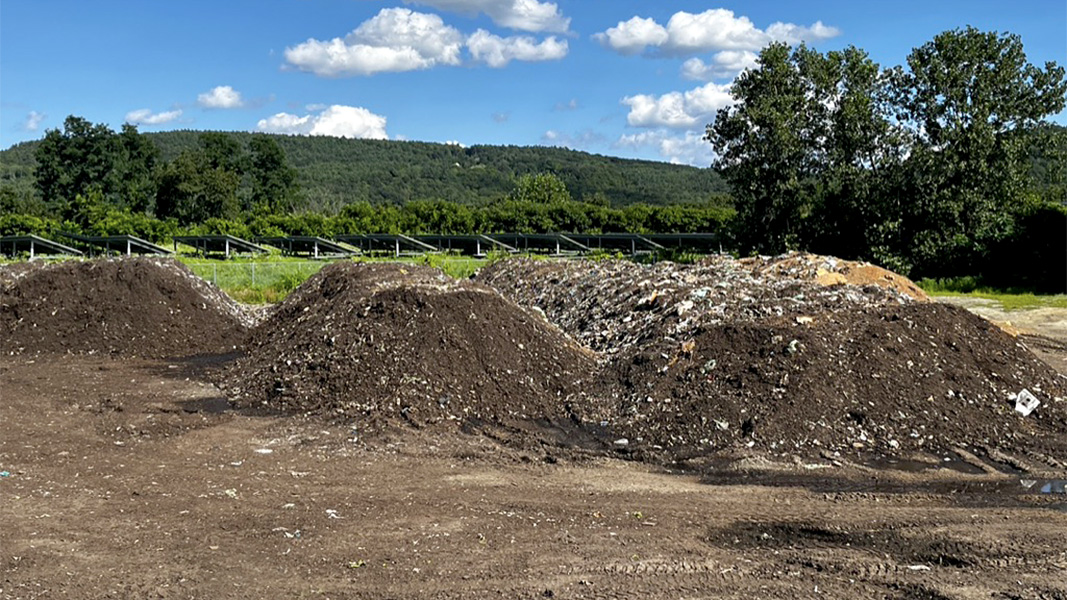Top: Photos by John Fay, Windham Solid Waste Management District
The Windham Solid Waste Management District (WSWMD) services 18 member communities in the southeast corner of Vermont. Its source separated organics windrow composting facility in the town of Brattleboro opened in 2013 and processed about 2,100 cubic yards (cy) of residential, commercial and institutional food waste and about 3,500 cy of wood chips and leaves in 2022. The site was permitted as a small-scale food waste composting facility under the Vermont Department of Environmental Conservation’s (VT DEC) rules, which is limited to 2,000 cy/year of food waste and a total of 5,000 cy/year of all other organics. “VT DEC knew that we were slightly over the permitted limit, but the District was in the midst of taking ‘corrective action’ to address the issue,” explains Robert Spencer, WSWMD’s Executive Director. “We were raising the funds to upgrade the site to expand its capacity. During that time, we applied for and received a permit for a medium-scale food waste composting facility permit, which allows up to 5,000 cy of food waste and a total of up to 40,000 cy of other organics annually.”
The Town of Brattleboro has residential curbside organics collection; most of the other communities in the District utilize food waste drop-off sites. (A Vermont law bans food waste disposal.) A small amount of food waste is tipped at the WSWMD composting facility by Elm City Compost, a collection service in nearby Keene, New Hampshire. Combined, residential food waste comprises about 1,880 cy/year. The balance comes from schools and commercial entities, including a gluten-free bakery, breweries, distilleries, and a sprouts grower — what Spencer calls ‘value-added food and beverage’ manufacturers. “That’s the fastest growing industry in this region,” he says. “We also are seeing an increase in cannabis growers who are mandated to recycle their waste.” The facility accepts BPI-certified compostable liner bags and foodservice ware.

Residential, commercial and institutional food waste, soiled cardboard and paper and BPI-certified compostable liner bags and foodservice ware are composted with leaves and wood chips.
The composting site upgrade includes aerated static piles (ASP) with heat recovery, which will increase processing capacity. “The shift to ASP provides greater capacity on a smaller site due to acceleration of the composting process,” notes Spencer. “The time is literally cut in half. Currently, the process takes 6 to 12 months in windrows — versus 3 to 6 months in ASP plus windrows for curing.” To cover the capital costs, the District received a $150,000 U.S. Department of Agriculture community facilities grant, a $276,000 VT DEC organics infrastructure grant, and $10,000 from the local Economic Development Corporation. The WSWMD Board allocated $250,000 to the project.
The new facility will have a 4,000-sq. ft. fabric building on a concrete slab to house the ASPs. Concrete block bunkers will be used to store incoming food waste and amendment; a mixing pad will be located adjacent to the building. Each ASP will have capacity to handle one week’s worth of materials; there will be four piles going at one time. “A heat recovery system is being installed primarily to accelerate the composting process in cold weather conditions,” says Spencer. “Hot humid exhaust air will be blown into a fresh pile. We are also specifying a condenser that produces low humidity hot air that can be used to dry piles for screening. Moisture is the enemy in this region when it comes to compost screening.” Other major components of the project are regrading the site and laying down gravel, leachate collection, and improved storm water management to meet VT DEC requirements for a medium-scale facility. “That’s what is driving the added cost,” he adds. “An existing detention basin is being expanded, and a 2,000-gallon tank will store collected leachate from the ASP building that we’ll probably reuse in the active composting process. Runoff from outdoor curing windrows will get treated through a vegetative treatment area.”
WSWMD is issuing three requests for proposals (RFPs) for the new facility — one for the fabric building, another for the aeration system, heat recovery components and biofilter, and a third for the site work. Spencer anticipates releasing the first two RFPs later in August since the building and equipment have long lead times. The site work RFP will be issued in January with construction starting in the spring of 2024.













